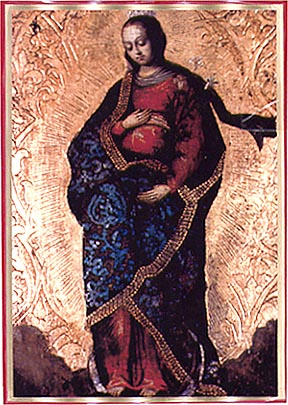
The Rosary Basilica in Lourdes at the foot of the Immaculate Conception Basilica above was designed by the architect Leopold Hardy and built between 1883 and 1889. It was consecrated in 1901 and has a capacity of 1,500. For the jubilee celebrations in 2009 the basilica was restored and new mosaic panels were made in the workshops of the Vatican on the front depicting the rosary mysteries of light. Above the main doors two mosaic circular panel represent, on the left Pope Leo XIII and, on the right Mgr Schoepfer Bishop of Tarbes and Lourdes from 1899 to 1927.


Around the central dome, the arms that are the transept and the sanctuary contain side-altars with mosaic images of the 15 mysteries of the Rosary. The Transept on the left contains altars depicting the joyful mysteries of the rosary (The Annunciation, The Visitation, The Birth of Jesus, The Presentation of Jesus in the Temple, and the Finding of Jesus in the Temple). Behind the sanctuary, five altars show the sorrowful mysteries of the rosary (The Agony in the Garden, The Scourging at the Pillar, The Crowning with Thorns, The Carrying of the Cross, The Crucifixion).



Finally, on the right transept are altars depicting the glorious mysteries of the rosary (The Resurrection, The Ascension, The Descent of the Holy Spirit on the Apostles, The Assumption of Our Lady into Heaven, The Coronation of Our Lady).

I cannot help feeling that if there is one form of art that the French just cannot manage it is that of mosaics: it has to be said that at best this basilica is not a great artistic success. Their other attempts at this in the Sacre Coeur in Paris and the basilica of St. Therese in Lisieux are just as poor. The side altars are of at best indifferent quality, while the image of Our Lady of Lourdes in the apse is shocking! Perhaps it would have been far more effective to use a plainer and more austere style here. However, in fairness it must be said that this church is preferable to that dreadful underground car park better known as the Pius X basilica!





















































